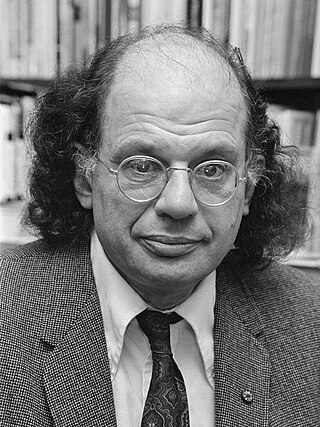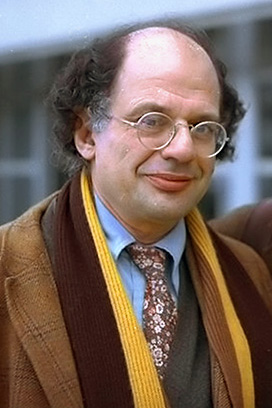
Irwin Allen Ginsberg was an American poet and writer. As a student at Columbia University in the 1940s, he began friendships with Lucien Carr, William S. Burroughs and Jack Kerouac, forming the core of the Beat Generation. He vigorously opposed militarism, economic materialism, and sexual repression, and he embodied various aspects of this counterculture with his views on drugs, sex, multiculturalism, hostility to bureaucracy, and openness to Eastern religions.

Gary Snyder is an American poet, essayist, lecturer, and environmental activist. His early poetry has been associated with the Beat Generation and the San Francisco Renaissance and he has been described as the "poet laureate of Deep Ecology". Snyder is a winner of a Pulitzer Prize for Poetry and the American Book Award. His work, in his various roles, reflects an immersion in both Buddhist spirituality and nature. He has translated literature into English from ancient Chinese and modern Japanese. For many years, Snyder was an academic at the University of California, Davis, and for a time served as a member of the California Arts Council.

The Beat Generation was a literary subculture movement started by a group of authors whose work explored and influenced American culture and politics in the post-World War II era. The bulk of their work was published and popularized by Silent Generationers in the 1950s, better known as Beatniks. The central elements of Beat culture are the rejection of standard narrative values, making a spiritual quest, the exploration of American and Eastern religions, the rejection of economic materialism, explicit portrayals of the human condition, experimentation with psychedelic drugs, and sexual liberation and exploration.

"Howl", also known as "Howl for Carl Solomon", is a poem written by Allen Ginsberg in 1954–1955 and published in his 1956 collection Howl and Other Poems. The poem is dedicated to Carl Solomon.

Lawrence Monsanto Ferlinghetti was an American poet, painter, social activist, and co-founder of City Lights Booksellers & Publishers. An author of poetry, translations, fiction, theatre, art criticism, and film narration, Ferlinghetti was best known for his second collection of poems, A Coney Island of the Mind (1958), which has been translated into nine languages and sold over a million copies. When Ferlinghetti turned 100 in March 2019, the city of San Francisco turned his birthday, March 24, into "Lawrence Ferlinghetti Day".

Gregory Nunzio Corso was an American poet and a key member of the Beat movement. He was one of the youngest of the inner circle of Beat Generation writers.

City Lights is an independent bookstore-publisher combination in San Francisco, California, that specializes in world literature, the arts, and progressive politics. It also houses the nonprofit City Lights Foundation, which publishes selected titles related to San Francisco culture. It was founded in 1953 by poet Lawrence Ferlinghetti and Peter D. Martin. Both the store and the publishers became widely known following the obscenity trial of Ferlinghetti for publishing Allen Ginsberg's influential collection Howl and Other Poems. Nancy Peters started working there in 1971 and retired as executive director in 2007. In 2001, City Lights was made an official historic landmark. City Lights is located at 261 Columbus Avenue. While formally located in Chinatown, it self-identifies as part of immediately adjacent North Beach.

Kenneth Charles Marion Rexroth was an American poet, translator, and critical essayist. He is regarded as a central figure in the San Francisco Renaissance, and paved the groundwork for the movement. Although he did not consider himself to be a Beat poet, and disliked the association, he was dubbed the "Father of the Beats" by Time magazine. Largely self-educated, Rexroth learned several languages and translated poems from Chinese, French, Spanish, and Japanese.

The term San Francisco Renaissance is used as a global designation for a range of poetic activity centered on San Francisco, which brought it to prominence as a hub of the American poetry avant-garde in the 1950s. However, others felt this renaissance was a broader phenomenon and should be seen as also encompassing the visual and performing arts, philosophy, cross-cultural interests, and new social sensibilities.
Carl Solomon was an American writer. One of his best-known pieces of writing is Report from the Asylum: Afterthoughts of a Shock Patient.

The City Lights Pocket Poets Series is a series of poetry collections published by Lawrence Ferlinghetti and City Lights Books of San Francisco since August 1955.

The Six Gallery reading was an important poetry event that took place on Friday, October 7, 1955, at 3119 Fillmore Street in San Francisco, California.
Neeli Cherkovski was an American poet and memoirist, who resided from 1975 onwards in San Francisco.

Reality Sandwiches is a book of poetry by Allen Ginsberg published by City Lights Publishers in 1963. The title comes from one of the included poems, "On Burroughs' Work": "A naked lunch is natural to us,/we eat reality sandwiches." The book is dedicated to friend and fellow Beat poet Gregory Corso. Despite Ginsberg's feeling that this collection was not his most significant, the poems still represent Ginsberg at a peak period of his craft.
Donald Merriam Allen was an American editor, publisher and translator of American literature. He is best known for his project The New American Poetry 1945-1960 (1960), one of the anthologies of contemporary American writing he released.

Jonah Raskin is an American writer who left an East Coast university teaching position to participate in the 1970s radical counterculture as a freelance journalist, then returned to the academy in California in the 1980s to write probing studies of Abbie Hoffman and Allen Ginsberg and reviews of northern California writers whom he styled as "natives, newcomers, exiles and fugitives." Beginning as a lecturer in English at Sonoma State University in 1981, he moved to chair of the Communications Studies Department from 1988 to 2007, while serving as a book reviewer for the San Francisco Chronicle and the Santa Rosa Press-Democrat. He retired from his teaching position in 2011.
Richard William McBride was an American beat poet, playwright and novelist. He worked at City Lights Booksellers & Publishers from 1954 to 1969.

"A Supermarket in California" is a poem by American poet Allen Ginsberg first published in Howl and Other Poems in 1956. In the poem, the narrator visits a supermarket in California and imagines finding Federico García Lorca and Walt Whitman shopping. Whitman, who is also discussed in "Howl", is a character common in Ginsberg's poems, and is often referred to as Ginsberg's poetic model. "A Supermarket in California", written in Berkeley about a market at University Avenue and Grove Street in that city and published in 1956, was intended to be a tribute to Whitman in the centennial year of the first edition of Leaves of Grass.

Howl is a 2010 American film which explores both the 1955 Six Gallery debut and the 1957 obscenity trial of 20th-century American poet Allen Ginsberg's noted poem "Howl". The film is written and directed by Rob Epstein and Jeffrey Friedman and stars James Franco as Ginsberg.

Shigeyoshi "Shig" Murao was a Japanese-American bookseller who is mainly remembered as the City Lights manager and clerk who was arrested on June 3, 1957, for selling Allen Ginsberg's Howl to an undercover San Francisco police officer. In the trial that followed, Murao was charged with selling the book and Lawrence Ferlinghetti with publishing it. Murao and Ferlinghetti were exonerated, and Howl was judged protected under the First Amendment, a decision that paved the way for the publication of Henry Miller, D. H. Lawrence, William Burroughs, and many other writers who offended the sensibilities of the majority.
















